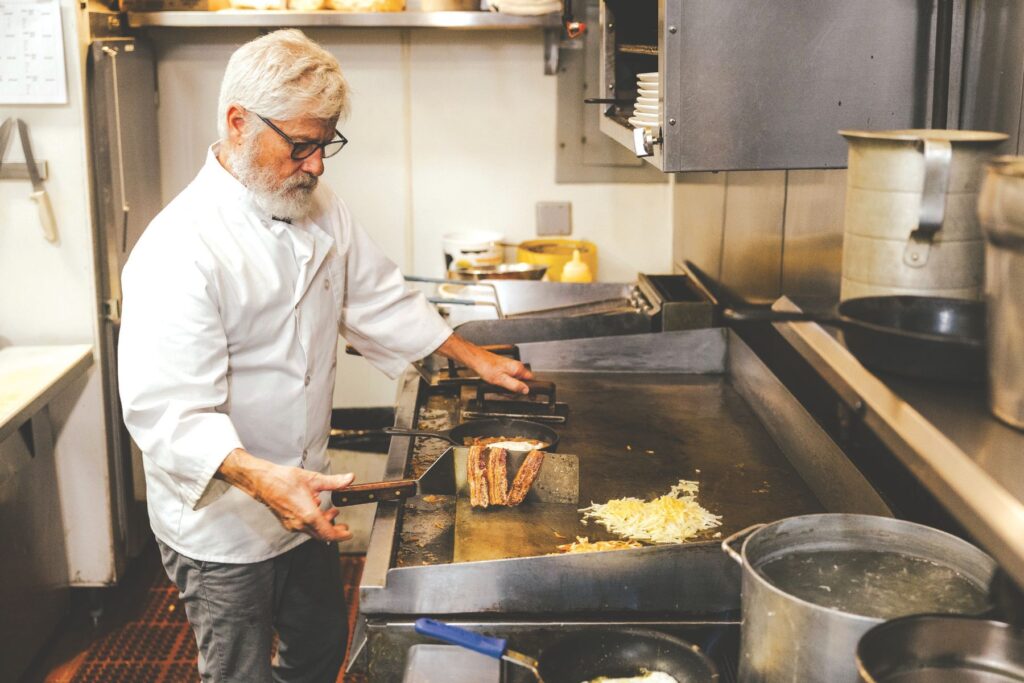
Stirring the Pot: Finding Mardi Gras Year-Round in San Luis Obispo
Story by Jonathan LaFerrara
Photography by Sarah Kathleen
There was a time when San Luis Obispo County had the “biggest Mardi Gras celebration west of the Mississippi.” That was until 2004, when the event, involving over 10,000 tourists, devolved into riots. Police officers cleared the area using pepper bullets, bean bag rounds and tear gas. Revelers reacted by throwing rocks, bottles and firecrackers. Cars were rolled over, and stop signs used as shields. More than 180 arrests were made in one evening and the city called in $100,000 worth of extra police help.
In following years, the city of San Luis Obispo pushed forth a “The Party is Over” marketing campaign to deter potential visitors from coming to the area for Mardi Gras. Fines for public disorder incidents tripled. What started as a small, local parade in the 1970s was no more.
What remains of the festivities today in San Luis Obispo can be experienced year-round. Founded in 1995, Bon Temps Creole Café offers the Cajun Creole cuisine that’s essential to Mardi Gras. “Cajun food is an exciting cuisine for me. It’s French cooking, basically, but with a lot more spice and pizzazz,” says Owner Phil Lang.
Cajun and Creole fare overlap; both are Southern-based cuisines developed from a French culture and cooking techniques. Creole cuisine comes from descendants of the upper-class French and Spanish settlers, while Cajun cuisine is traced back to French-Canadian descendants, who arrived in Louisiana after years of suffering and exile. Many New Orleans restaurants serve food inspired by both. There are often Creole and Cajun versions of the same dish — rich gumbo, smoky jambalaya and smothering étouffée.
Bon Temps was first opened on Olive Street, across the freeway from its current location. A second spot was opened in Pismo Beach. Later Phil and Co-founder Bob Winick split the restaurants, with Phil and his wife Julie, taking on full ownership of the San Luis Obispo location. Eventually, the Pismo Beach restaurant closed.

The journey of Bon Temps has come with its share of challenges, sourcing specialty ingredients and balancing tradition with local tastes, among others. They also included a big move with an intricate facelift. The restaurant now stands in the city’s Railroad District in historic Hotel Park, which is over 100 years old. In 1983 the building underwent a $1 million complete remodel with two floors converted into apartments and the ground level reserved for restaurants.
“I love the area,” says Phil. “Just the vibe of it all. Having the patio that we do, it feels like going to a Garden District restaurant or hotel in New Orleans.” Here, customers feast on popular dishes including eggs Sardou (poached eggs in artichokes, topped with a spinach garlic cream sauce), faitdodo (a skillet of red beans and grits, covered with eggs and hollandaise sauce and served with andouille sausage) and Shrimp and andouille jambalaya (made with a spicy Creole sauce and white rice, served with cornbread and honey butter).
The café isn’t just a place for food. It’s a celebration of the lively Creole culture, with zydeco music and Southern staples, and an invitation to savor the spirit of the South. At a time when restaurant industry turnover is the norm, it is one of the few places where loyalty and longevity define the staff, adding depth to the dining experience. Phil’s co-Chef Martín Zarate has been here for 17 of the restaurant’s 29 years; Martín’s wife, Antonia, is the prep cook and has worked here for 15 years.
This dedication has fostered an atmosphere of charm, rhythm and reliability. Gary Laver, a professor at Cal Poly and regular customer, finds himself dining here five or six times a week. “I’ve been going here for at least two decades,” he says. “Back in the day, I went there only for lunch on Thursdays. I now eat there far more regularly, but Thursdays soon came to include lunch with friends from work. [My family] has celebrated many special occasions there. When I’m there by myself it’s a place to get comfortable and read. I also like the jazz or blues they play in the background. I can’t think of any other place in town that can tick all those boxes for me.”
Despite the challenges, catering to an audience that’s 2,000 miles away from New Orleans and sometimes unfamiliar with traditional Creole dishes has its rewards. The restaurant has become a culinary landmark, where students celebrate milestones over muffulettas (traditional New Orleans sandwiches with sliced capicola, salami, ham, provolone cheese, olive tapenade, lettuce, tomatoes, pickles and a Creole aioli) and locals find an unexpected taste of the South. The blend of hardy, flavorful dishes with a welcoming atmosphere has made this restaurant not just a place to eat, but also a place to connect and savor a bit of Louisiana ‘esprit’ — no matter the zip code.







